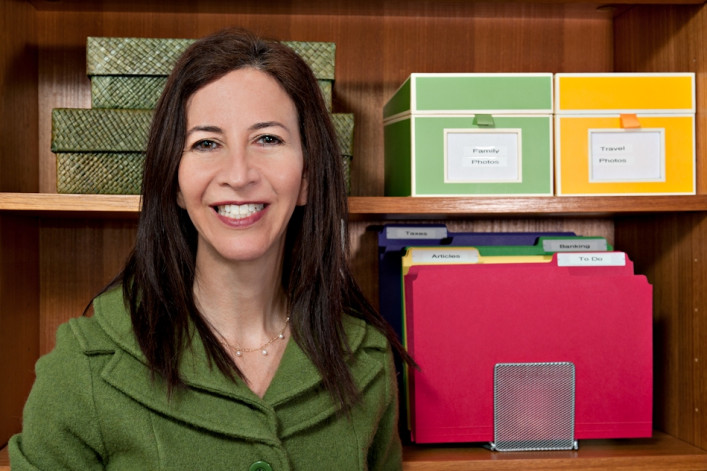Professional organizer Lisa Zaslow shares the secrets to staying clutter-free

Getting organized in a New York City apartment is a nightmare. No matter how much of a minimalist you are, there's never enough space, and once things fall into disarray, summoning the mental energy to whip your place into shape can feel impossible.
Just like in the marketplace, there are places in your home that are more valuable than others, and those are places that are easy to reach and easy-to-see places that are between the height of your shoulder or hips in a closet or a cabinet in the kitchen. You want to put the things that you use most often in your prime real estate. A lot of what I do with people is moving stuff that is not used often out of that prime real estate and putting key items there instead.
How do New Yorkers find extra space?
One place that is often unused is the cabinet on the top of the fridge. Also, use under-the-bed boxes and maximize that space by putting things there you don’t use often like off-season clothes. High shelves in the closet are also a space that typically goes unused, and many times people don’t remember what they put there. I always say open your mystery boxes; sometimes those boxes are empty. Also, throw away your computer boxes and electronic boxes unless you are really going to sell [the electronics] on Ebay.
What are some easy ways to get organized?
In your closet, if you store all of your short hanging clothes together, like shirts and skirts, you will create three feet of space. Underneath, you can put in a dresser, stacking shoe shelves or, a product I love, the Umbra Dublet, which is a closet rod doubler, which allows you to have two rods of short hanging clothes. Another miraculous little product that people don’t know about is the Rubbermaid Wrap ‘n Bag Organizer. You attach it to the inside of a cabinet door and you can organize everything vertically, which usually frees up a drawer.
What’s an organizing horror story? And a success story?
I had one client who had a mini-storage space, and he was spending a lot of money to store things, so he wanted to clear it out, which I commend him for. But he ended up bringing 80 boxes from storage to his apartment, and then opening them all up at once. So when I walked in the whole entire living room was just covered with stuff. But the horror story turned into the success story in this case. Eventually we were able to maximize his available space using some additional shelves.
Are you naturally organized, or is it a learned skill?
A combination. From very early on my mom was organized and systematic, so I remember that even when I was in kindergarten, for example, my sister and I had dressers that my mom had written labels on, like pajamas, shirts, etc., with little pictures showing what was in each drawer.
I remember being in first grade, and our elementary school had three floors. It was just chaos on the first day, with kids running up and down the stairs. A teacher finally intervened and told everyone going up to walk on the right side of the stair they were on. And it worked. To me it was always magical how organization principles worked, so it was something that I always gravitated towards, and it never felt like a chore to me.
Related:
10 Minutes with professional organizer Jeffrey Calandra: Even the rich need Bed, Bath & Beyond
5 affordable must-haves for an organized bathroom























